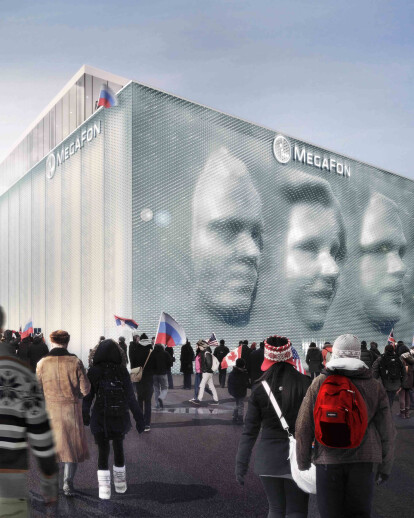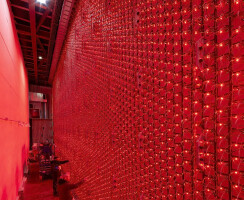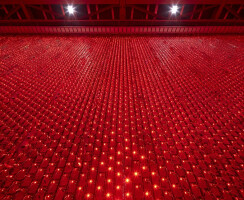Over 150,000 visitors to Sochi 2014 Winter Games will have their faces 3D scanned and recreated on the incredible transforming façade of the MegaFon Olympic Pavilion, designed by British architect Asif Khan.
For the past year Asif Khan has been working on a 2000 m2 Olympic pavilion and landscape for MegaFon, one of the largest Russian telecommunications companies and a general partner of the Sochi 2014 Winter Games.
Khan's structure, sited atthe Olympic Parkentrance, is designed to function like a huge pin screen. Its facade is made up of11,000 actuators, which transform the building’s skin into a three-dimensional portrait of each visitor’s face.
The concept is to give everyone the opportunity to become the face of the Olympics. It is a monument for the digital age.
Anastasia Orkina, MegaFonChief Marketing Officer comments: “The Sochi Olympics motto of our company is: “Make your own history”. These Games are our national heritage. And those thousands of faces on this architectural canvas will make contribution to this legacy by drawing a united portrait of Russian sports fans and supporters. Our Olympic Pavilion is not just a remarkable work of architecture, but a very important metaphor of the unity of individuals. It will bring people together.”
The pavilion’s façade will display up to three eight-metre-high faces at a time for a period of 20 seconds each, and anyone visiting the games can participate by visiting the 3D photo booths within the pavilion and having their face digitally scanned.
In addition 3D photo booths were sited at MegaFon retail stores around Russiato allow those who can’t attend the games to also have a presence there - a physical avatar.
Asif Khan comments: "I’m inspired by the way the world is changing around us and how architecture can respond to it. ‘Selfies’ and ‘emoticons’ have become our shorthand for communicating in the digital age; my instinct was to create a piece of architecture for Sochi which could be monumental yet open to that immediacy”.
After a scan has been made, the 3D image will be processed and fed to 11,000 mechanical actuators within the pavilion’s facade behind a stretchy fabric membrane. Each actuator can be extended by up to two metres, which allows it to define three-dimensional form at architectural scale. There is an RGB-LED light at the tip of each, making it possible to precisely calculate the position of every pixel and render the output of the facade in colour.
The system will take approximately one minute to calculate a three-dimensional model from the five individual pictures taken in the photo booths.
"The difficulty in our case was the development of a system that would meet Asif’s requirements of the project in relation to speed, usability and image quality. The process will be as fast and simple as using a commercial photo booth,” said Valentin Spiess, the CEO of Swiss engineering firm iart AG, and who Khan worked closely with on the pavilion's actuated facade design.
The MegaFon pavilion will remain in place for the duration of the Olympic and Paralympic Winter Games 2014 in Sochi, Russia.




































